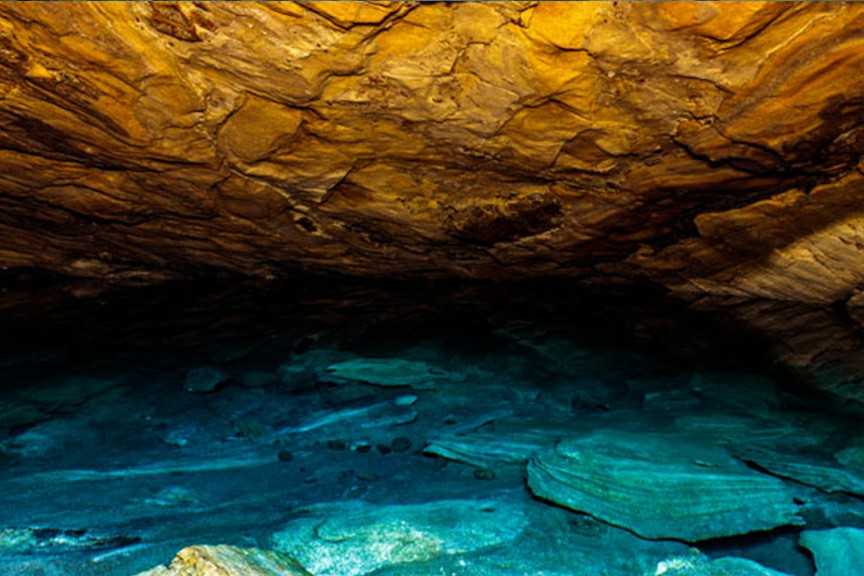Search for Ravana's underground palace and the blue pool ( NILDIYA POKUNA CAVING )
underground cave complex, currently found in the Karandagolla area of Sri Lanka. Reaching this pond is
a somewhat difficult and risky activity, making " Karandagolla Nil Diyapokuna" a unique destination for
both local and foreign tourists who enjoy cruises. Before mentioning this trip, first of all, it should be
said that while publishing an article about mountaineering or any other trip can bring you the beauty of
that trip from beginning to end through photos, it is a difficult task to do on this trip. Because of the
dense darkness in the underground cave, the space for clear photography is very limited due to the risks
of this journey and the problems of illumination.
To reach the Nil Diya Pokuna, after passing Ravana Falls on the Ella-Wellawaya Road for about 6 km,
turn right and travel along the Mango Estate Road for about 2 km. Two routes have been found to
access this cave complex. That is to enter the underground cave through a hole in the ' Ravana Ella
Sanctuary' and to enter the underground cave complex through a cave opening which is approximately
3km away from there. You will definitely need a guide on this journey and ' Methananda Ayya' of
Karandagolla who is known as the discoverer of this cave complex is the best guide for your journey. He
will charge a reasonable fee for this and the telephone number where he can be contacted is mentioned
at the end of the letter.
As this is a journey into an underground cave, and where there is no drop of light, powerful torch lights
must be prepared before entering this cave. Carrying wearable torches on your head will make your
journey safer and easier as your hands will be free. Also, the more light there is, the more you can enjoy
the beauty inside the cave complex.
The journey to the blue pool in this underground cave complex, which is believed to be linked to the
legend of Ravana, is an intriguing, arduous journey through the narrow openings of the rock and the
huge hallways, and from time to time find very deep moats and pieces. Thrace and fear coexist
throughout the journey due to the cutting darkness.
You must first descend into the cave at a distance of about 30 feet with the help of a rope through a
very small opening from the ground illuminated by sunlight. There you will find a small room-like
section and then a short distance through a narrow gap between two rocks that only one person can
cross. Then with the help of another rope, you have to go down about 40 feet and find a hall-like space
that feels a bit big. Inside the naturally formed limestone cave, the torchlight falls and is colored like
various rocks and looks like a charm. The sound of an underground waterfall can be heard in a low voice
and it can sometimes be thought of like the sound of a waterfall. From there, on a slippery slope, about
600 meters away, you can see a natural pool of water that glows blue with torchlight and even the
bottom is visible. In fact, it's an indescribable pool of words.
The folklore associated with this creation, which explains the wonders of natural beauty, is that the
underground palace of King Rawana was located in this cave complex and was hidden here when Sita
Devi was brought to Lankapura. Despite its true falsity, the design is stunning, and its mystery and
intense silence double its beauty.
From a scientific point of view, this is a naturally occurring limestone cave complex. Experts believe
that this water is so pure and blue because of the limestone. However, a team of local and foreign
researchers (tecdiving srilanka) dived into the blue pool and researched how the underground complex
unfolded.
Whether there is a story of the past in this cave complex that is somehow invisible to science is a
question that comes to the mind of anyone who visits here. This place hides the answer to that
question and these places are great examples of the hidden beauty of the small island of Ceylon.


Comments
Post a Comment